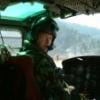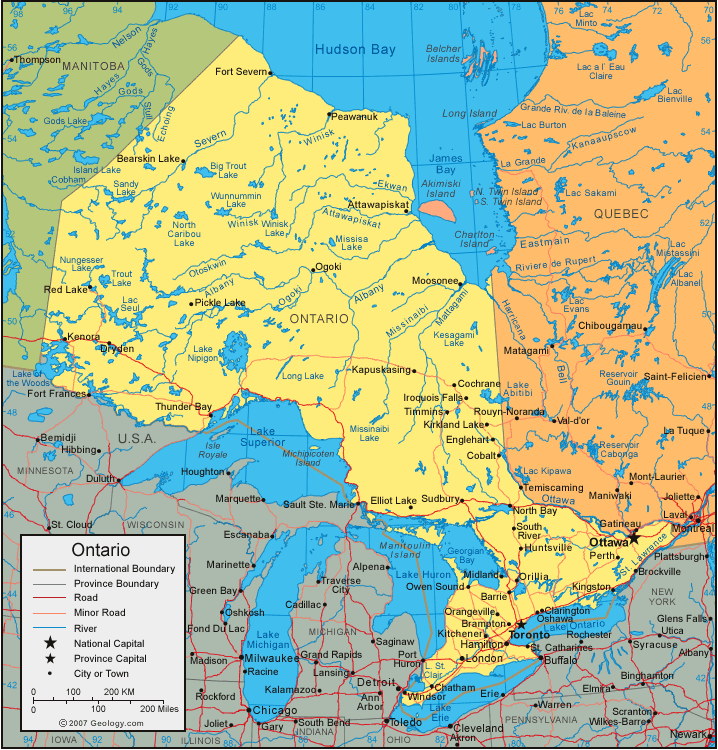-
Posts
100 -
Joined
-
Last visited
-
Days Won
1
kiefk last won the day on September 27 2018
kiefk had the most liked content!
About kiefk
- Birthday 05/09/1971
Contact Methods
-
Website URL
http://
-
ICQ
0
Profile Information
-
Location
Thunder Bay, ON
-
Interests
Adventure racing
Snowboarding
Mountain Biking
kiefk's Achievements
-
Ornge collective Agreement is available online
-
publicapps.caa.co.uk/docs/33/CAP371.PDF Link to UK FRMS - heavy reading
-
But your wife's union, and by default she, agreed to the averaging though right? It wasn't imposed on them as part of their job description. Is her averaging agreement something like this: ARTICLE 9 - Hours of Work and Overtime 9.1 Unless otherwise provided, employees who are regularly assigned to work 40 hours per week will not be required to work in excess of 8 hours in a 24-hour period nor more than 40 hours in a week. Any hours worked in excess of 8 hours in a 24-hour period or 40 hours in a week will be paid for at the rate of time and one-half. 9.2 Employees who are not regularly assigned to work 40 hours in a week will have their hours of work averaged over a period of 14 calendar days consistent with the pay periods in practice within the Company and shall not exceed 80 hours in such 14-day period. Any hours worked in excess of 80 hours will be paid for at the rate of time and one-half. 9.3 Unless otherwise provided, employees whose hours of work are averaged will not be required to work less than 5 hours or more than 10 hours in a 24-hour period. Hours worked in excess of 10 in a 24-hour period will be paid for at the rate of time and one-half. Such hours will not be utilized in computing the 80 hours in the pay period. 9.4 When it becomes necessary for employees to work overtime, they shall not be laid off during regular hours to equalize the time. 13 9.5 Employees called or required to report for overtime work under this clause and reporting, whether used or not, will be allowed a minimum of three hours at prevailing overtime rates. 9.6 Where overtime work is continuous with, before or after, an employee’s regular shift, such work will be assigned to the employee on duty or coming on duty as the case may be, provided that the work is not of three hours duration or more. 9.7 If the duration is more than three hours or is not continuous with a regular shift, a spare employee, if available, will be obligated to fill the requirement for service. When spare employees are not available, employees will be called on a seniority basis to work overtime. 9.8 Nothing herein is intended to prevent the Company from requiring the junior available employee in the classification to fill the requirement for service.
-
Hey if you had a union and a contract then you'd be paid overtime when you exceed 2080 at work....oh no not the "hey let's all unionise" mantra again Q: Why do heli pilots have to wait until they get to offshore or EMS before they get one? Every pilot that flew EMS @ CHL got / gets paid overtime. And Gray I've done nothing but provide facts, in fact the only one to provide actual, if historical, figures. I would assume the government did a cost analysis before they changed providers BUT I don't know, and neither I assume does anyone, apart from the politicians involved who will never tell. I've never disagreed with Mac's premise, just maybe his intentions. I'm sure he's a really nice person, in person. robot - we operate 12 hours shifts and so hit our 2080hr CLC threshold after 173 shifts. If your company wont even pay standby pay for sitting on IA then maybe pilots should be looking at their contracts, CARs and the CLC a little closer and be more informed. We all know though it's down to interpretation in all 3! I hope I am just providing a little of the other side of the story, with what little knowledge I have actually working here. Great discussion everyone but if individuals are unhappy with their lot then it's easier to blame others....Fly safe everybody
-
Sorry for my bad phraseology Gray. I'm not sure if you work for CHL now and hence the confusion. As heliian said: I'm saying those salaries listed in your link are merely a historical continuation of salaries originally paid by CHL. They were carried over by Ornge directly and haven't kept up with the CPI (cost of living) ever since. Fact; in 2009 CHL paid Captains with an ATPL and IR up to $98k, FOs $67k, plus overtime and benefits. In 2016 (your link) Ornge was paying $106 / 72k plus overtime. That's an increase of just 1.2% annually - Hardly spending gone mad!? It just goes to show how much overtime Ornge pilots do to keep the sick people of Ontario safe.....so that is indeed what the private sector paid in the past and would have continued to pay if CHL had continued the contract - I presume (depending on contract negotiation, etc)? Sorry for any confusion caused. I guess the only thing that might stop the 'theoretical discussion'; is if another operator(s) publicly put forward a proposal to provide 24/7 IFR aircraft (FW and RW) with 2 pilots, 2 critical paramedics, engineers, support staff and infrastructure required to meet the logistical and transparent documentation required by the MOH to cover 1,000,000 km square and 40% of the Canadian population, many of whom don't even have road access. It would appear nothing is easy, or cheap, in this industry. It's just that Ornge has to show where the money goes, unlike private for profit companies If anyone out there would like a job with us: https://www.ornge.ca/careers Don't forget Ornge employees live in Ontario and so pay taxes, and spend their salaries in Ontario. If there was a AW139 & PC12 Class D sim in Ontario - all the money could stay here...
-
or STARs or Cougar or CHL or Phoenix or any on this list: https://en.wikipedia.org/wiki/Air_ambulances_in_Canada Most experienced commercial pilots would be upset with a lesser salary... So as robottxt says "show me the money" - but no one will It will either show pilots are underpaid elsewhere or complete hipocrisy Or as 18speed stated 'crewing is one of the biggest costs in any operation', especially a 24/7 IFR one Plus the list linked is only for salaries over $100k, in line with public disclosure rules, and not for all of the pilots/AMEs. And, as a side note, those salaries came from CHL....
-
Maybe Hydro One contracts out some of its' line work to keep down costs, when work outweighs their fleet? They operate their own Astars for the majority of their own line work and maintenance. Same as the OMNR contract out their Fire work when their fleet is outweighed by their needs. Both of which is surely financially responsible of them, which goes against your original premise doesn't it?? Aviation is expensive period. SMS is a voluntary system to audit safety and training. It doesn't stop pilots and companies having accidents,it just creates a paper trail to find root causes. It doesn't cost a company or a taxpayer anything unless they did something blatantly wrong and are taken to court? http://www.tc.gc.ca/eng/civilaviation/standards/sms-basic-2838.htm The taxpayer pays for health should we privatise: hospitals, paramedics, ambulances and nursing. Taxes pay for police and fire departments, they costs alot too, should we privatise them also? All they do all day is sit around watching TV or in Tims drinking coffee - right... Without prejudice, you should stick to your pastime - Not sure what this even means, but thanks for your concern over how I spend my down time. Or maybe you're saying I have no idea what I'm talking about, which is why I'm here trying to fill my knowledge gap from more experienced people like yourself. So how does any of the above tie in with your original article that basically said: All flying should be privatised, as it costs me too much (in taxes) or I don't have enough of the pie? (depending on your level of cynicism) Heck maybe the more popular solution would be to privatise Politics - those people do nothing they say they will and get full pensions after just 8 years! You wanna save money there's your 'pot of gold' Again a great discussion and thank you for starting it Mac
-
Another committee, I thought you were trying to lower government spending? Your wording "that can be turned over...and long term contracts" subtly implies that all aviation is better done by the private sector? Maybe the military should be privatised too.....again no figures for how much you'd charge - just 'it's not fair' MOH, Hydro and Ornge are all 3rd party audited and insured by private sector but paid for through taxes? (I know people who work for the other 2) Are you seriously saying that if Hydro had outsourced flying to another private company the accident wouldn't have happened? I would assume that Hydro's safety department is for the actual 'electrical and line work' and isn't for aviation safety - that is part of the job of the Chief Pilot in most (smaller) private companies. SMS doesn't stop accidents; it just makes people aware if there is something out of the 'norm'. "Of course, TCCA does not do any oversight, they just call in TSB after an accident." As they do with ALL companies. There are 3 open helicopter investigations and 15 reports that the TSB 'know about' in the past 5 years; and only 1 is non private. We all know that not all of the incidents/accidents that TSB should know about, they do know about. This is because the private sector thinks they are not 'real accidents'. If a private company were running these operations and had an accident and so had to change something not covered in the contract - guess who pays, the taxpayer! Your post still just smacks of "it's not fair, how do I get some of that money..." unless you have a solution with costs. Not just a committee comprising of only private sector interests. Having said all the above, I would agree with the premise of a well balanced overview of how savings may be made, for the benefit of taxpayer dollars. But the private sector does not fix all problems - just look at the US....would you be happy paying $45,000 for a 10 min Medevac in an Astar for example!? It's aviation - there's never a perfect solution for all. Every solution creates another problem or 'out of the frying pan and in to the fire'
-
RFPs and RFIs are done for everything at Ornge, it's a requirement of the MOHLTC and Provincial government.....and audited. www.rfp.ca is just one public website you can go look at. I'm glad that both you and blackmac bring these questions out in semi-public forums and aren't just complaining at the bar. It helps all of us to learn what others think and solutions that may be better or at least worth considering. But there needs to be numbers and verifiable facts... If we don't evolve we die. Don't be part of the problem be part of the solution.
-
Gray, 18Speed reckoned on around 8-10million per Ac for the question I asked - does that seem reasonable for an IFR Ac. Ornge has 11 Ac so that's 88-110 mill just for the RW; is 18Speed way off the mark?? [just by way of background info - one of our regular routes is 1h5 @ 145kts each way or a 4-5hr drive by land ambulance] Would your idea of light twins in each city be able to carry the equipment required by the MOHLTC? I would guess only the H145, in the lt twin market, would have the capability of going to the H1 pads in the GTA. An H145 is US$9.7 mill new or 8 used......CHL must have chosen the S76 for a reason. Ornge, I believe, chose the AW139 due to the Cat A and icing capability. Plus apparently other things I've read in the news............neither are small Ac..... To be able to staff twice the Ac and hence twice the people you'd have to half the wages of all frontline staff. So how much would you charge (just rough ballpark numbers) for the 34 Cat A light twins with 240 ATPL pilots in 26 bases with maintenance & infrastructure? I don't disagree with your premise; just how much will the 'new idea' cost? Especially considering the Ac cannot be used for anything else, at any time, every day of every year. How many hours would you need the Ac to fly to make a profit? [While we are solving the provincial woes, maybe we should replace the huge ambulances we now have with minivans and just have more of them......they cost MILLIONS joke]
-
Here's a question: How much would you actually charge per year for 1 helicopter; Must be available at 15 minutes notice Must be available 24/7/365 IFR & NVG equipped and capable 150nm service area with no commercial fuel locations in between Staffed 24/7/365 Capt: ATPL IR FO: CPL IR 2 medics: Critical care paramedics Nothing too crazy, just throw out a rough number.......
-
-
Hi Gray I assume ( bad word i know) that this was written by someone at Ornge who doesn't fly and is just suggesting an 'ideal' site for someone else who doesn't know. There are numerous pictures out there of Ornge 139s perched on the sides of rocks in parks, belly deep in snow and various other places. The one thing against us is size; approx 55ft dia for just the aircraft so we're not getting in to every tight hole - but hey it's a helicopter so we can just go somewhere else . Anything much smaller and we wouldn't be able to get the medical equipment, stretcher(s), survival gear, Oxygen, monitor, pump, raft, TC reqd pubs and 4-6 people in. Not sure what STARs coverage areas are going to be with their new 145s. H145 240kmh/651km vs AW139 306kmh/927km (euro specs hence not nm/kts) It would appear that Ontario stops just outside the 400 series highways to you......Yes smaller aircraft may make sense in the GTA and surrounding cities but not anywhere else. That would lead to mixed fleets and parts and training and currency and and and. If the weather is too bad for IFR then good luck in the traffic jam on said 400 highways as nothing will be moving 1nm/200ft. Your "contradictions" seem to be from getting points mixed up. Powered stretchers are there to prevent back injuries of the medics and where not feasible there is a scoop back board. Staffing vs aircraft costs had nothing to do with fractions of MOHLTC budgets. 1/4 the cost of a 139 a 212 used to be charged to OMNR for fires (single pilot) for $3,500 hr and that was back in 2012. More Ac = more pilots (Blackmac says there's a shortage), more Ac = more maint, more maint = more AMEs (actual shortage), more maint = more parts, more Ac = more medics. More AC, Pilots, Medics = more costs Cougar, Bristow and CHL all have union collective agreements for their EMS/Offshore contracts and they're private... PC12s are already busy enough doing from the North coast to Winnipeg to London and everywhere in between with an airport nearby. Helicopters do hospital pads, scenes and airports (IFR) where FW makes no sense or cannot service. As for SPIFR speak with TC... also ask the US HEMS SPIFR pilots if they would rather fly a 2 crew H145/AW139/S76C++ or a B206/B406/EC30 IFR alone at 3am, 8hrs in to a 12-14hr shift on day 6......what would you like to have / how would you feel if that patient was your family member or you. Remind us all how many crashes do they (US) have each year due to 'for-profit' pressure. BUT I admit wholeheartedly I do not run a helicopter company. I do not know the efficient cost savings that can be made from running a company. I do not know the solution; I am just trying to straighten out the few facts I do know. Ask 10 pilots / owners for an opinion get 12 differing opinions, we all know this






